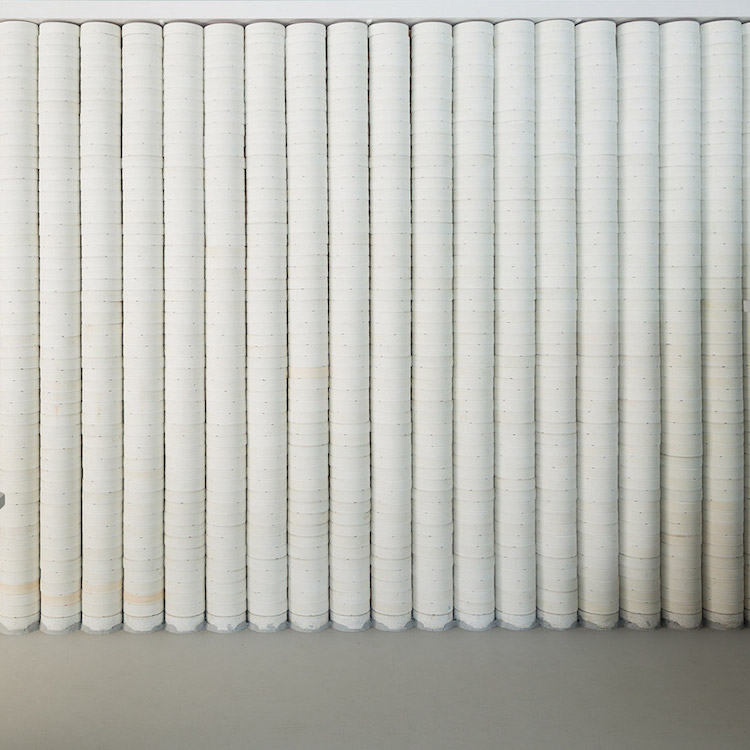HASAMI, Japan — The Oyane Gallery and Shop exudes remnants of Hasami’s porcelain artistry. From its interior retail space’s sophisticated terraced counters to the wide mosaic steps trickling down to a new open air community workshop space, no avenue is left unexplored for utilizing salvaged ceramic. The design is the brainchild of Tokyo-based studio Do Do. Architect Kei Harada told Dezeen, he wanted to reference the traditional ceramic techniques and materials of the town’s 400-year porcelain legacy.
“The answer was a total revamp of the internal and external structure, while realising the spirits of the artists using the materials of Saikai porcelain. Remnants of the porcelain artistry can be seen throughout the structure.”

Harada’s up-cycled aesthetic for the shop and gallery’s interior employs myriad repurposed materials, DesignBoom writes.
The shop, located on the ground floor, uses white cases called ‘boshi’ to populate the space. these cases were traditionally used for firing pottery, but here are topped with glass table-tops and surfaced in muted grey, adding to the up-cycled atmosphere. finished wood display cases and furniture offset the raw materiality of the rest of the space, and create a modern dynamic of new and old. sunlight penetrates and is exacerbated by the space, where products are displayed simply and quietly — each design sits independent of its neighbour, while still contributing to a collective whole.
Outside, a new open-air community space for hosting workshops and markets features a large white-painted corrugated metal pitched roof pavilion resembling a typical historic factory in the local area, Dezeen writes.
Strips of glazing run though the canopy, bringing natural light down into the space beneath. Like the steps, the flooring is made from a mix of concrete and shards of white and blue porcelain.

Porcelain fragments pepper the wide stairs leading down from the shop to the pavilion. Click for larger image

Click for larger image
Plastic crates are repurposed with porcelain counters to create picnic-style benches and a long community table running along the length of the pavilion. The opposing area is left open for large gatherings and markets.
Do you love or loathe this work of contemporary ceramic architecture? Let us know in the comments.







Add your valued opinion to this post.